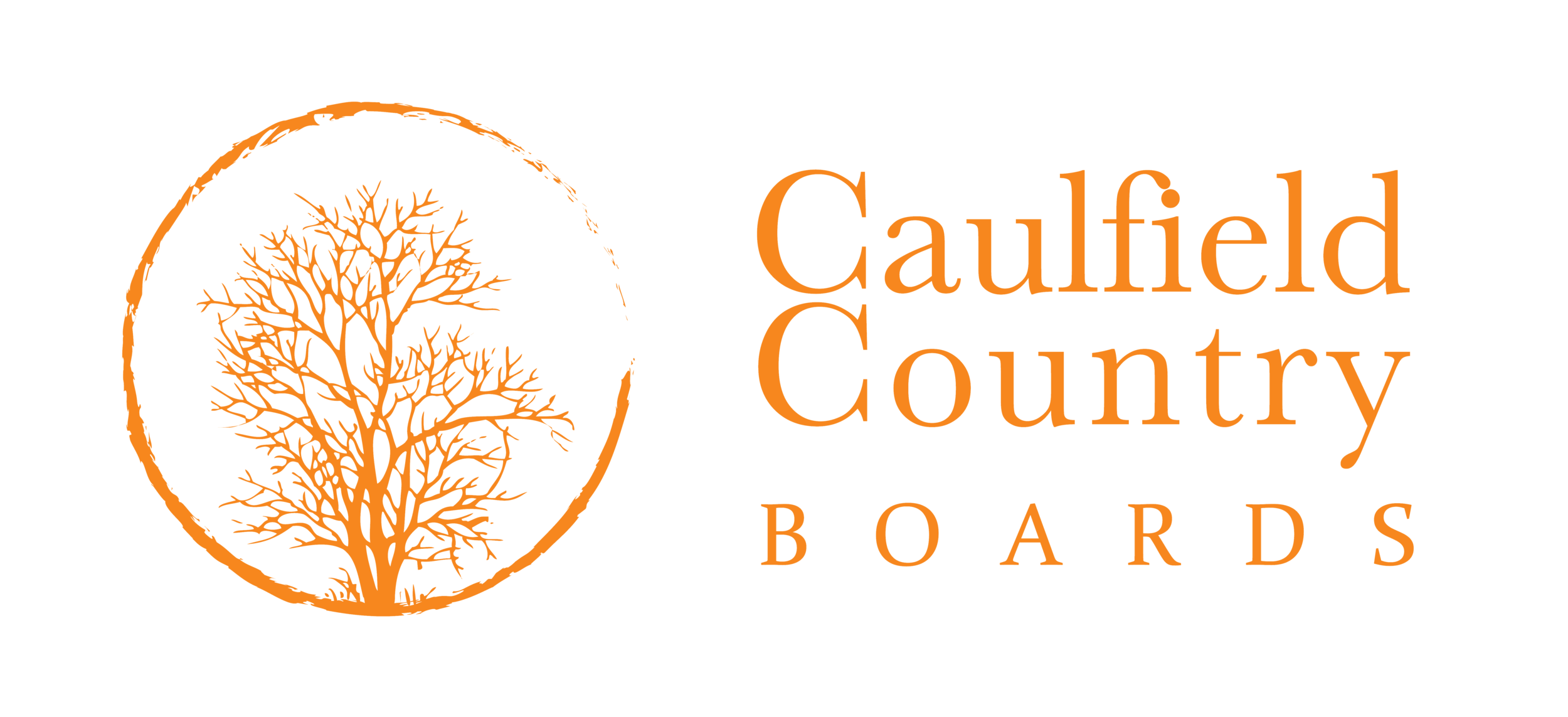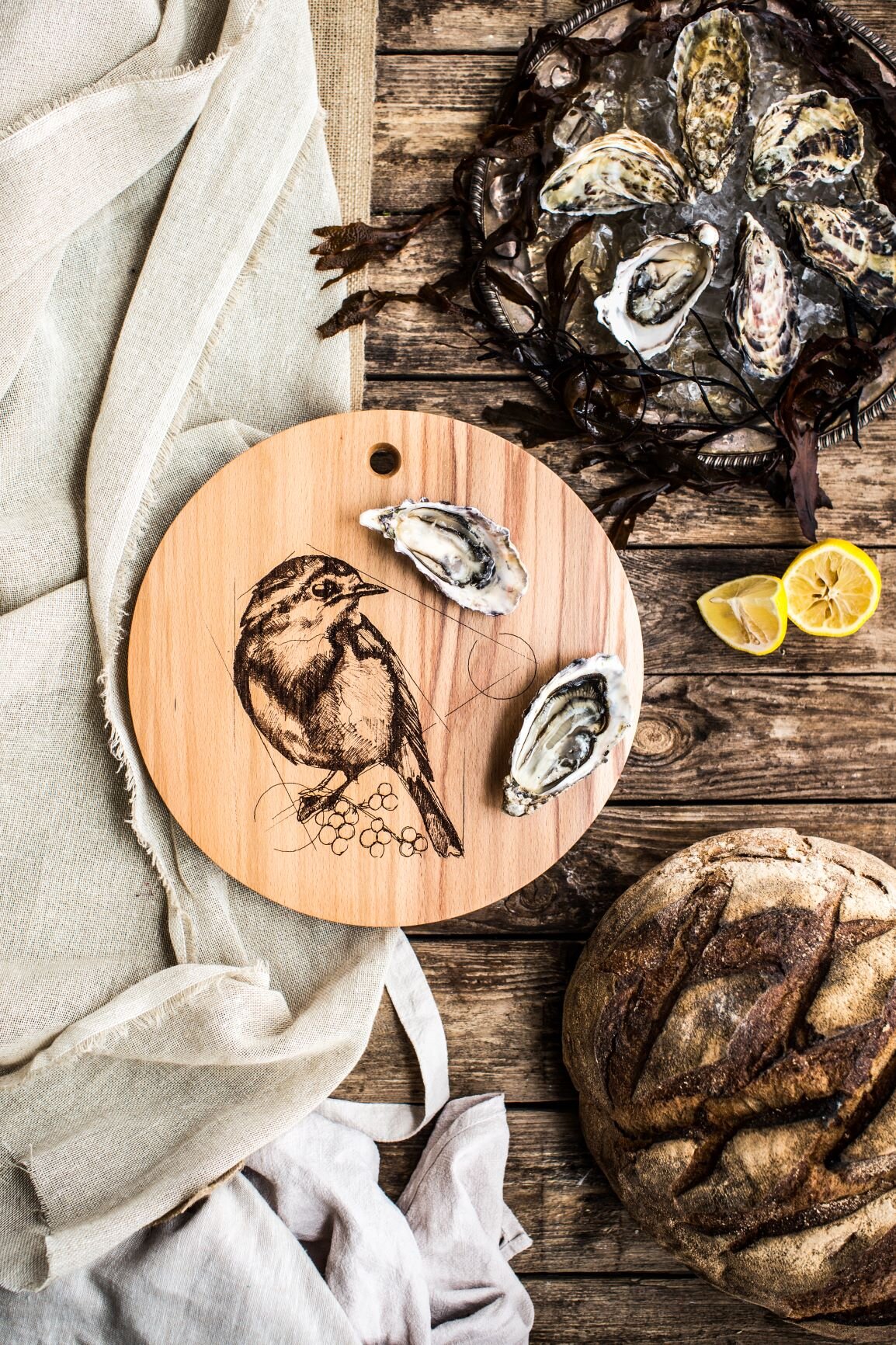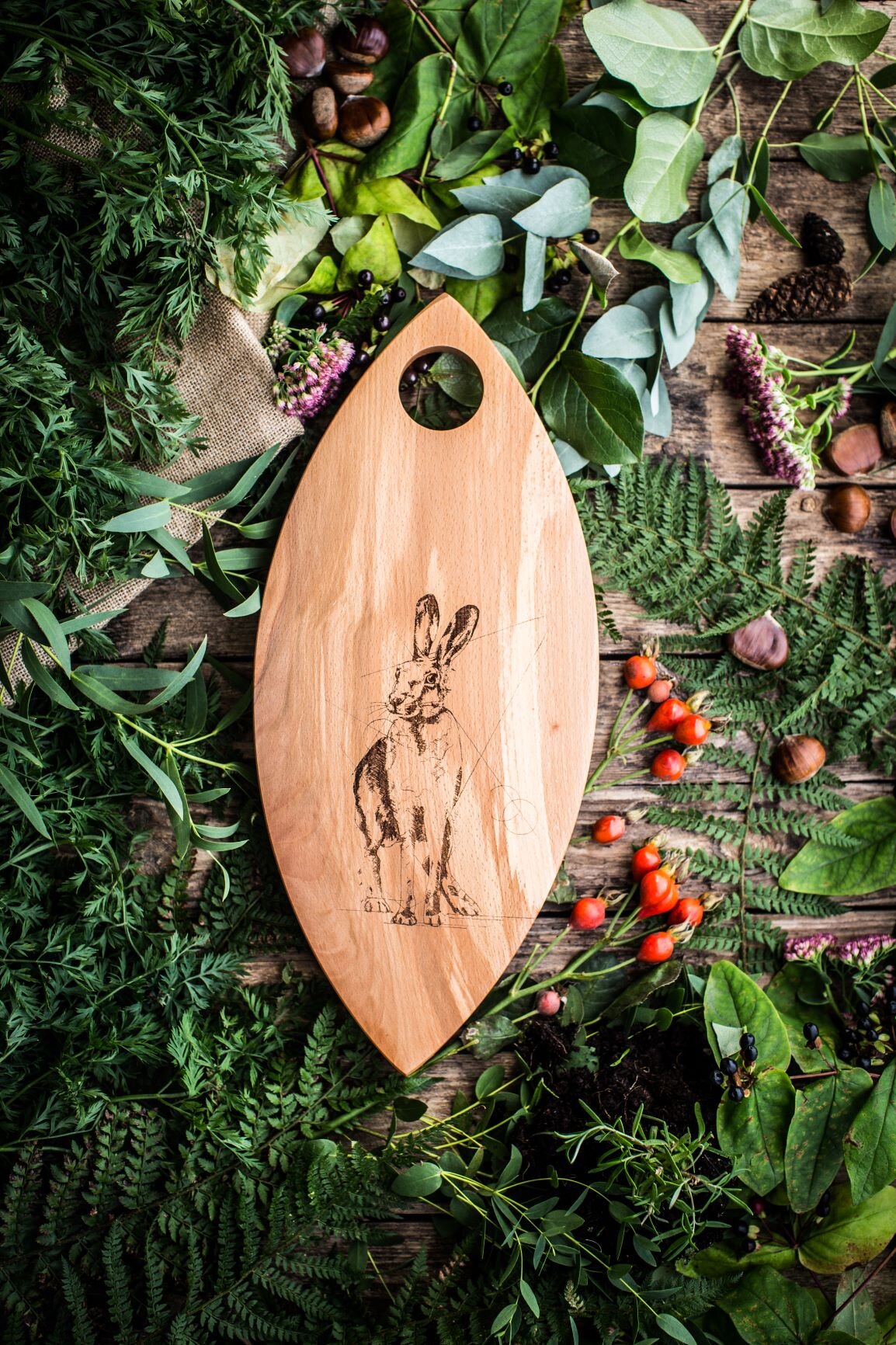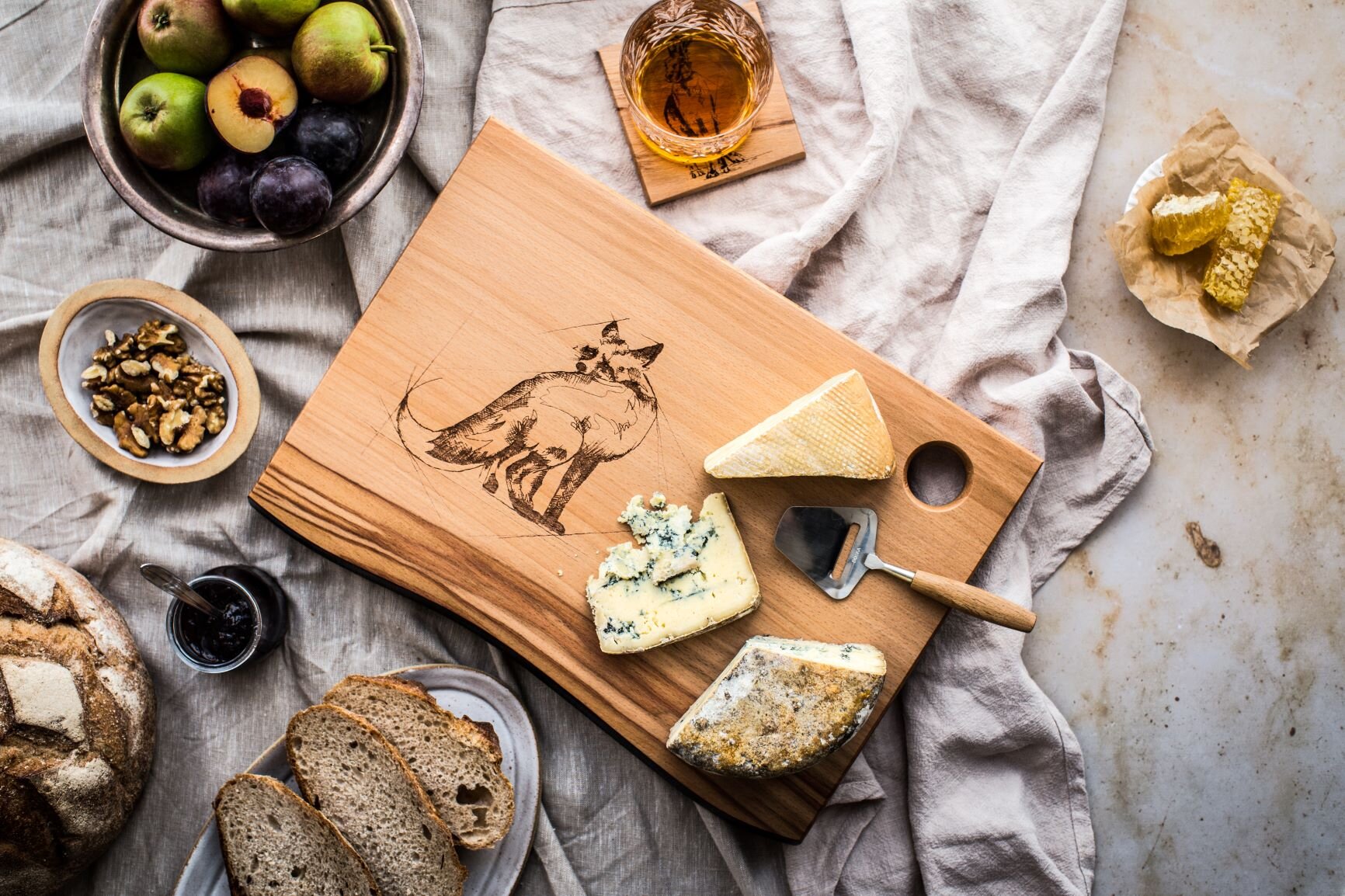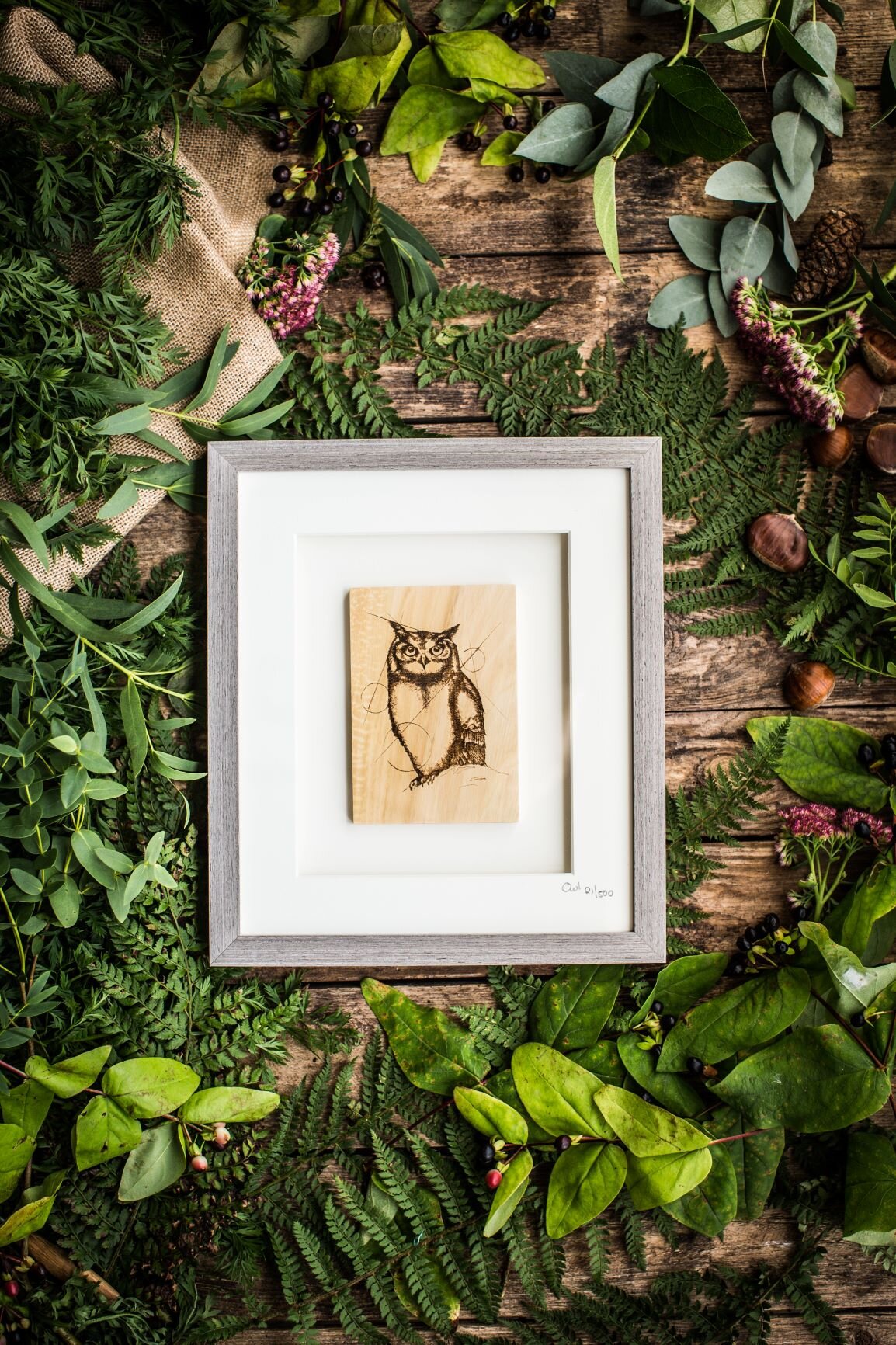The Native Collection
Inspired by our natural landscape, the Native Collection is tableware that has been lovingly hand-manufactured using home-grown, hardwood flaming beech. Adorned with original artwork by our sister Deirdre, it combines traditions both old and new to portray the beauty of Ireland.
Limited edition frames
Inspired by our natural landscape, the Native Collection limited edition framed animals are illustrated by our sister Deirdre. The original artwork is laser engraved onto home-grown, hardwood flaming beech, which boasts a beautifully unique natural grain. No two pieces are the same.
The Illustrations
Original artwork by Deirdre Caulfield (BA fine art painting) is laser engraved onto each unique piece.
The Irish Deer
The prehistoric Giant Irish Deer that roamed our luscious green land at the end of the last Ice Age had the largest pair of antlers ever recorded on any deer-like animal. The animal's special link with Ireland is that most of the best examples of antlers and skeletons were found preserved in our extensive bogs. Most Irish Giant Deer remains date from 11,000 or 12,000 years ago. Presently, the red deer is Ireland’s largest land mammal and is the only species of deer that is considered native to Ireland.
The old pound coin was adorned with a proud, mystical stag, and indeed deer feature prominently in Irish mythology. The stag is a proud symbol; many Munster families have this animal in their crest and in ancient times kingship was often defined by the hunt for a stag.
The Hare
The Irish mountain hare is one of Ireland’s longest established indigenous species of mammal. It is distinguished from the brown hare by having a stockier build, shorter ears and a white tail. The most well known reference to the Irish Hare was it’s presence on the Irish Half Penny. It is also associated with the banshee as the hare’s cry is almost human like.
The Witch-Hare and supernatural theft: In Irish folklore hares are undoubtedly connected with witchcraft. Many stories across this land have been told of cows mysteriously and unaccountably losing their milk. When the farmer sets a watch in the early morning all he sees amongst his cattle is an innocent looking hare. But, this is an enchanted hare; an old hag in the shape of a hare stealing milk from his cows. Time after time the farmer fails to shoot this particular hare. A wise old village elder says, “I am not surprised at it, she’s a witch-hare, and sorra a mother’s son could hit her without a crooked sixpence in his gun”.
The Owl
Celtic tradition connects the owl with an announcement of death (more likely symbolic of transition or change). The owl is sometimes believed to represent the Cailleach, the primordial Celtic hag goddess of harvest and winter who arrives during the festival of Samhain and rules the dark half of the year. One of the many Gaelic names for the owl is Cauilleach-oidhche (Crone of the Night). The Cailleach appears after the autumnal equinox when the earth is dying. She is the goddess of death, and the owl’s call was often sensed as an omen that someone would die.
The Salmon
The Atlantic Salmon is a shimmering silver colour, exhibits a muscular build, moves gracefully and emanates magnificence. Native to Ireland, they are the most sporting of game fish with their swift and acrobatic movements combined with their elusive and complicated behaviour - they challenge and bewilder the masterly fly fisherman! Most rivers in Ireland get a run of salmon from Spring until Autumn.
Fionn mac Cumhaill was the great leader of the Fianna of Ireland and The Salmon of Knowledge from the River Boyne in Co. Meath was the source of his wisdom… It was said that the first person to taste its flesh would be wiser than all other men.
The Red Fox
The Irish Red Fox is easily recognisable by their small doglike appearance, reddish brown tint and long, bushy, white-tipped tail.
In folklore worldwide the fox is considered to be sly, clever and cunning. It is associated with adaptability and was thought to be a shape-shifter, assimilating into its environment even when the environment is changing rapidly. As a result it is the most widely distributed carnivore in the world and has readily adapted to urban habitats. There are many Irish myths associated with the fox, but this is one of our favourites: It is thought to be unlucky to meet a woman with red hair or a fox when setting out in the morning, especially if you are a fisherman. Fishermen, be warned!
The Field Mouse
The wood mouse, also known as the long tailed field mouse, is one of Ireland’s prettiest small mammals. Its Irish name ‘Luch féir’ means ‘grass’ or ‘field’ mouse It can be distinguished from other small rodents by its long tail and large eyes and ears.
As the name would suggest it is a woodland species, living in coniferous, deciduous and mixed forests. However, its highly adaptable nature leads to habitation of most areas except water logged land.
In Celtic mythology the mouse represents secrets and shyness, and the ability to hide in times of danger.
The Robin
The bright red breast of the robin makes them the most recognisable bird in Irish gardens, parks and woodlands.
Irish legend says “if you harm a robin's nest, you’ll be struck by lightning”. In our house it is said that robins embody the souls of loved ones passed on; they are winged messengers from the spirit world.
The Otter
Found in our rivers, lakes, marshlands, and along the coast, the Eurasian otter is a charismatic and secretive mammal native to Ireland. Otters reside in holts situated underground, along river banks or amongst root systems of trees. They prefer to use vacated rabbit dens or fox earths rather than go to the trouble of excavating their own burrows - savvy creatures!
In Irish folklore the Dobhar-chú, translating literally as “water hound”, was a deadly mythological creature known as the King Otter. Half-dog, half-otter, he is land- and water-dwelling and feasts on human flesh.
